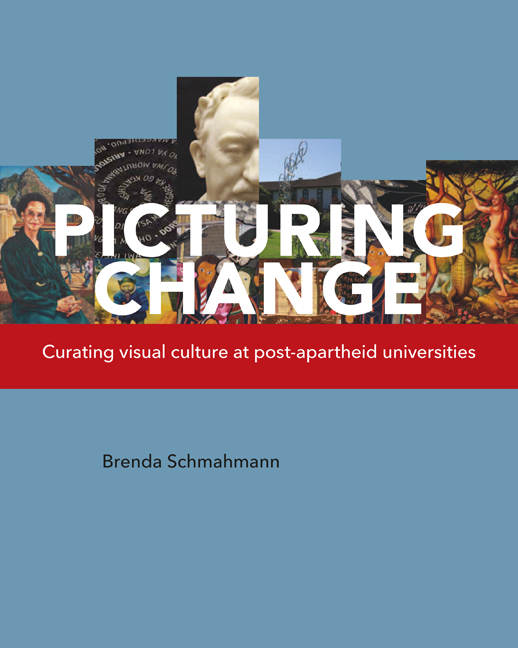4 - Portraits of university officers
Published online by Cambridge University Press: 21 March 2018
Summary
In January of 1962, Port Elizabeth artist Dorothy Kay completed a painting for Rhodes University that she had begun late in 1961 (Figure 82). A representation of Cullen Bowles, who had joined Rhodes in 1909 as a lecturer, become Professor of Greek in 1911, Professor of Classics in 1929, and the institution's second master between 1931 and 1937, its commission marked the start of a formal policy of obtaining portraits of leaders at the institution.
Kay was clearly at pains to include specific details relevant to the sitter. Her daughter Marjorie Reynolds (1989: 402) writes that the artist delayed beginning the painting in order that she might obtain a Cambridge hood for copying. She also included the Rhodes crest in the top left-hand corner of the work, a detail which makes clear the connection between the sitter and the institution he served. But while directness in designating markers of qualification and affiliation would have been expected, rather less usual was the avoidance of idealisation in rendering Bowles’ distinctive features. It is not simply that Kay reveals his bald pate – already a feature when a much younger Bowles had served as master. It was rather that she did not obfuscate the fact that age had added jowls and a double chin to the sitter as well as bluish bags around his eyes. Furthermore, the pose is slightly unusual for a university leader. Whereas such portraits tend to present sitters in a way that implies that both feet are placed squarely on the floor, as in a more or less contemporaneous portrait of University of the Witwatersrand chancellor Richard Feetham by Waalko Dingemans (Figure 83), Bowles is shown with one knee crossed over the other, and with his bent left arm providing a light support for his slightly tilted head. While revealing the effects of age on his body, Kay has shown her sitter with a type of elegance that borders on the effete.
But even more unusual is the overall composition and style of the work. Kay's brushmarks are loose and dynamic, and they become abstracted and generalised at the base of the painting, resulting in the chair, parts of the gown and the sitter's knees being shown in abbreviated form. It is a style of making that insists upon the painting as a constructed object and reveals its maker's familiarity with European modernism.
- Type
- Chapter
- Information
- Picturing ChangeCurating visual culture at post-apartheid universities, pp. 151 - 194Publisher: Wits University PressPrint publication year: 2013



